Increased Burma Army Attacks In Muthraw District Force Karen to Resist
14 May 2018
Karen State, Burma
The situation in Muthraw District, Northern Karen State is deteriorating due to Burma Army violations of the National Ceasefire Agreement (NCA).
A Karen National Liberation Army (KNLA) commander announced on the 11th of May that his soldiers would engage any Burma troops outside NCA areas operating within his zone of control. The announcement came after an increase in military engagements last week from 8-11 May.
Firefights occurred between the KNLA and Burma troops at Paw Na Day in the Ta May Kee area; Baw Taw Kyo in the Ler Mu Plaw area; and at Doo Aw Hsaw Day in the Ta May Kee area on the morning of May 8th.
On the same day at 14:21 the Burma Army fired nine mortars into Show Ber Ko Village from their camp at Htaw Mo Plae.
Further clashes followed on the 10th when KNLA engaged Burma Army soldiers in two separate incidents at Doo Aw Hsaw Day in Ta May Kee area and at Htee Si Klo in Ler Mu Plaw area.
Burma Army soldiers took positions on the 11th in the Ler Mu Ko and Show Ber Ko areas. Villagers in the area reported Burma soldiers stole livestock from them.
At 19:20 on the 11th, fighting took place between the KNLA and Burma troops at Ler Mu Kaw Hte, Ler Mu Plaw area. The Burma Army fired 18 mortar rounds around the village rice field, followed by a further five rounds at 20:10.
The KNLA report they observed 10 wounded Burma Army soldiers being evacuated from the area to their bases at Bu Hsa Kee and Paw Kay Ko as a result of the fighting.
The KNLA also said the Burma Army has two bulldozers and a truck carrying fuel in the Kay Bu area, which started ‘road-building’ on the 10th in the Ta May Kee area. Progress has been slowed by mechanical problems and the rains.
The Burma Army has set up a new position at Pa Na Law Gay Kyo, Show Ber Ko area, which has a bulldozer, though road construction has not begun yet.
Burma Army units in Muthraw District under the command of Military Operations Command (MOC) 20 – Tactical Operations Command (TOC) 1 will replace MOC 13 once the road is finished. Both MOC 20 and 13 will remain in Kay Bu area until then.
Burma Army units in the Kay Bu area under the command of MOC 13 – TOC 1 are Light Infantry Battalions (LIB) 432, 555, 556 and 585. Units in the area from MOC 20 – TOC 1 are LIB 593 and 594.
This report is an addendum to FBR’s report ‘A Killing in Karen State’ (see below and here) about the murder of Saw O Moo, a Karen activist and aid worker, and FBR’s recent mission to investigate his death and the Burma Army’s renewed aggression.
A Killing in Karen State
5 May 2018
Karen State, Burma
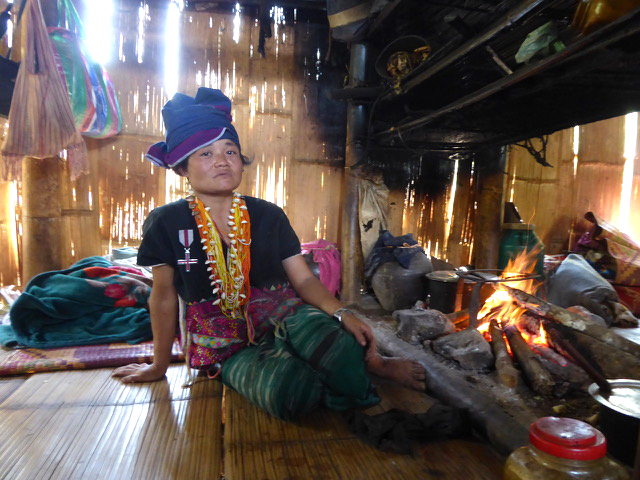
Naw Paw Tha, widow of Saw O Moo who was murdered by the Burma Army on 5 April 2018. She is photographed with an FBR medal honoring her husband.
“How will take care of my seven children?” asks Naw Paw Tha, wife of Saw O Moo, who was shot and killed on 5 April 2018, by the Burma Army. Here in Ler Moo Plaw, Muthraw district, Northern Karen State, Naw Paw Tha, her children and 2,500 other villagers have fled Burma Army attacks.
Our headquarters team joined with Karen and Arakan Free Burma Rangers to give immediate assistance along with Eado and Mohammed, teammates from our mission in Iraq and Syria. Eado is a Yizidi leader from Sinjar, Iraq, and Mohammed is our Iraqi team member who was shot six times by ISIS in Mosul saving a family.
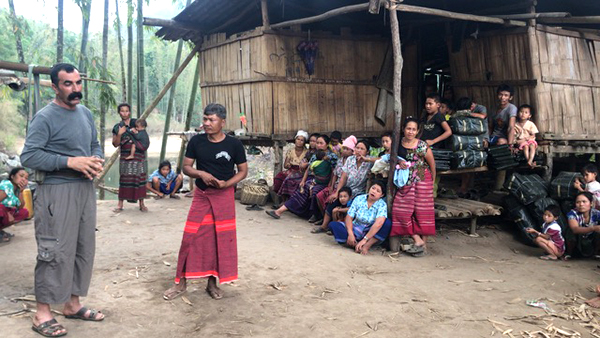
They had never been in the jungle or walked so many days. Their hearts were broken for the loss the Karen suffered and they tried to encourage them. At a hiding place, we met and prayed with some of the people who had fled.
We felt happy to see them, yet sad that they were now displaced. Most of them we knew through our years of work in this area.
Eado and Mohammed were moved by the suffering of the Karen, and they shared their own sorrow and love. “God is bigger and will help you. Don’t give up, you are suffering as we suffer in Iraq, but God will help you. Have faith and work together. We are so sorry for what has happened and we are with you.“
Mohammed told them, “I am so glad to see you and see how strong you are and smiling even in the very bad situation. You teach me a lot and I want to share it with my family and people in Iraq. I pray to God for your help and freedom. I love you.“
We prayed together to ask God for help. Jesse, Peter, Mohammed and the team then distributed tarps for shelter from the coming rains.
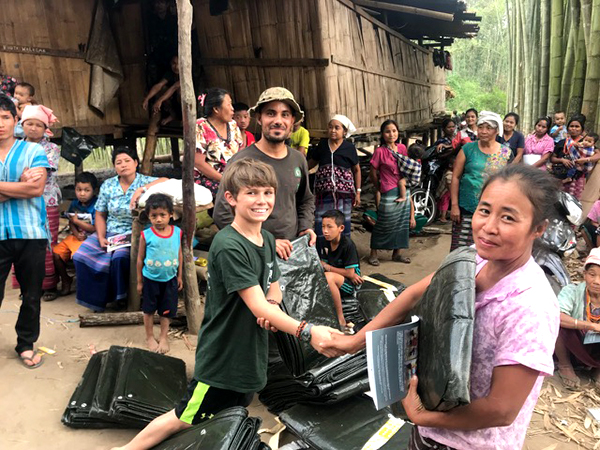
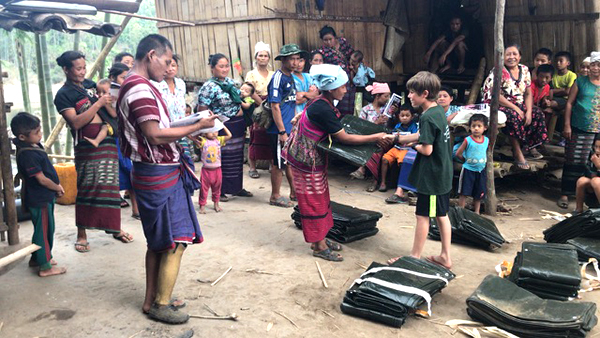
The next day we went to the empty valley of Ler Mu Plaw to document the situation. On the way, we passed the trail where Saw O Moo had been ambushed on his motorbike.
His friend who was on the bike with him was able to get away, but Saw O Moo was shot off the motorbike. His blood was still on the bamboo leaves, and there were many bullet holes in the bamboo trees.
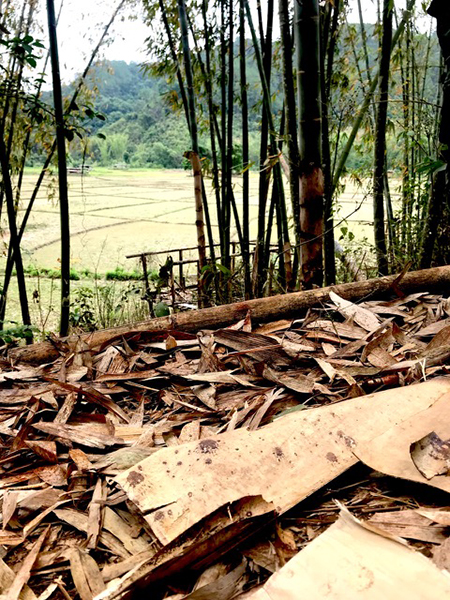
The trail he was shot on is about a kilometer from the road the Burma Army is trying to build and under the observation of a nearby Burma Army camp. Saw O Moo’s brother told us that after the Burma Army killed Saw O Moo they drug his body away to claim he was a Karen soldier out to attack the Burma Army. Saw O Moo’s body has not been found.
After praying for Saw O Moo at the site of his murder, we walked past empty houses and fields, where earlier this year Karen children had played and where my children had ridden their horses and sang with villagers.
It was sickening to see the empty houses and belongings scattered about. We walked along the edge of the valley until we could look up and see the Burma Army camp over Ler Mu Plaw. As we watched, we could see scores of Burma Army troops outside the camp and moving up the mountain.
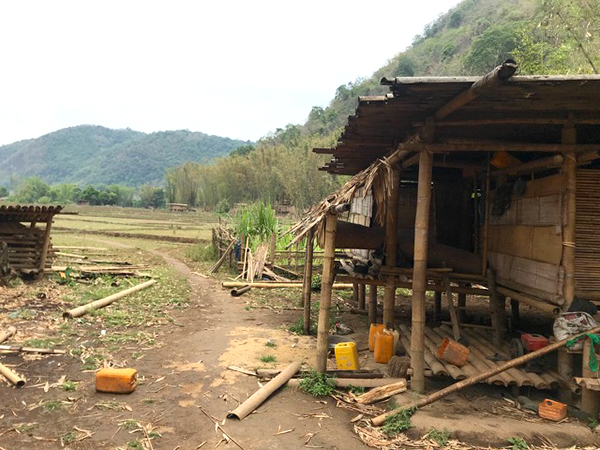

We found out later there were over 400 Burma Army troops who reinforced the area that day.* We continued on and arrived at another abandoned village on the west side of the valley. There we found the widow of Saw O Mo.
Her name is Naw Paw Tha (Mrs. Apple), and she was in a small hut with her children. “I have come back to try to find the body of my husband,” she said. “The Burma army killed him for no reason and then took his body away. How can I have a memorial if I can not find his body?”
She began to cry and asked, “How do I take care of my seven children?”
We prayed with her and gave her money for her family and two FBR medals in recognition of her husband’s service as a local aid worker and environmentalist. She said she will go deeper into the jungle to hide from the Burma Army.
We stepped out of the hut and met Saw O Moo’s mother and another man who was shot earlier by the Burma Army. “We just need peace,” said Saw O Moo’s brother.
It does not look like the Burma Army will give them that.
Thank you for caring and God bless you,
Dave, family and FBR
*Burma Army troop reinforcements have since grown to over 600 and include three bulldozers.


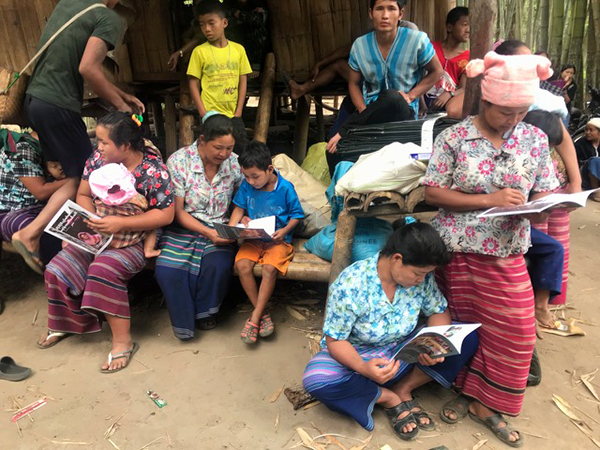

Context and Background
With more reinforcements coming and bulldozers, the Burma Army is building a road to bisect this northern area in order to further project their power. During the Burma Army offensive of 2006 and 2007, the Burma Army built a north-south road connecting their camps of Ler Mu Plaw and Kay Pu. Many smaller camps were also built along this roadway.
The KNLA, a Karen resistance group, KNLA fought to regain this area. By the end of 2011, the Burma Army no longer used the road between Ler Mu Plaw and Kay Pu and had withdrawn from the camps in between.
After the signing of the preliminary ceasefire agreement in January 2012, villagers waited for a few years to see if the peace would last and if they could trust the Burma Army to uphold their ceasefire agreement.
Starting in 2013, villagers began farming again in areas close to the then-abandoned Burma Army camps. In 2017, many villagers who had been displaced since 2006 or earlier began moving back to the area between Ler Mu Plaw and Kay Pu. After the 2012 ceasefire people started to trickle back in, but now the Burma Army has returned in force to push a road through again.
Starting this March, the Burma Army shot at and mortared villages, driving over 2,500 people from 14 villages out of the Ler Mu Play valley. The villages include: Ler Mu Plaw, Yee Gaw Lo Der, Blaw Koh, Kaw Ter Der, Htee Keh Kee, Kay Pu, Baw Lay Der, Ta Keh Der, Bo Nar Der/ Tokho Mu Der, Gay Thoo Khi, Sho Per Kho, Loh Ko, Tha May Khi, Thay Thoo Khi.
The murder of Saw O Moo and the displacement of over 2,500 people is further proof of the Burma Army violating the ceasefire. Under General Thein Sein’s government in 2012, ethnic groups negotiated a ceasefire that included regulations on troops, deployment of military force, troop movement zones and protection of civilians.
The Karen National Union (KNU) signed a preliminary ceasefire agreement and by October 2015 a final Nationwide Ceasefire Agreement (NCA) was signed by several of the major ethnic groups. Since late February 2018, the Burma Army has violated the agreed-upon terms regarding troop movement and NCA code of conduct in Karen State.
Thein Sein’s presidential office oversaw ceasefire negotiations until Aung San Suu Kyi’s National League for Democracy (NLD) came to power in November 2015. Since then, the NCA has been under the control of the Burma Army. As a result, not only have ceasefire talks stalled, but they have regressed from the Burma Army’s disregard of the NCA’s code of conduct and aggressive military actions in Karen State.
*Edit Correction: This report was edited to correct (KNO) to (KNU).
